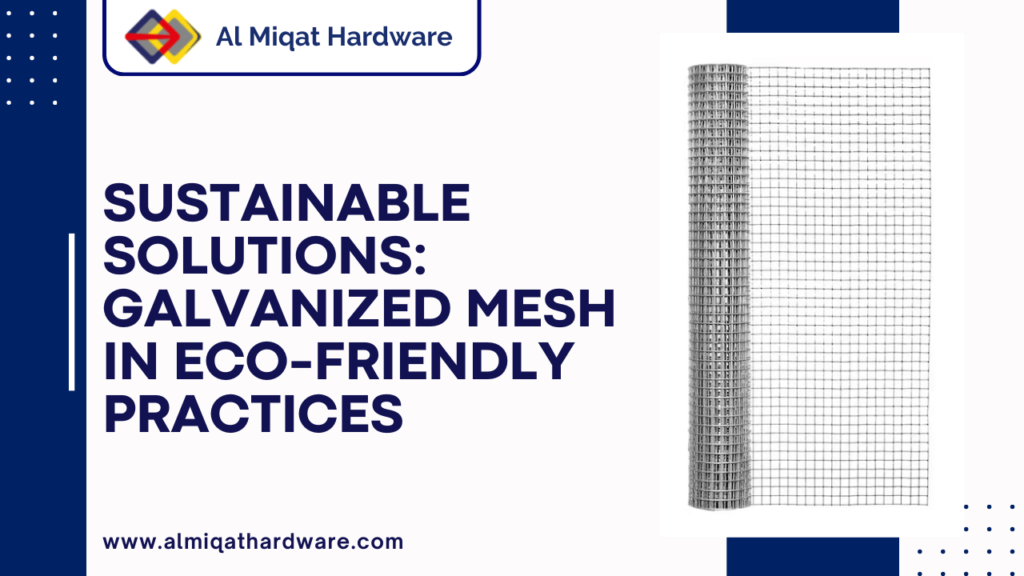In an era marked by environmental consciousness and sustainable living, the choice of materials used in various industries plays a pivotal role in shaping our ecological footprint. Galvanized welded mesh stands out as a prime example of a material that not only fulfills practical needs but also aligns with eco-friendly principles. In this blog, we’ll explore how galvanized welded mesh contributes to eco-friendly practices across diverse sectors, from construction and agriculture to landscaping and beyond.
1. Sustainability in Construction:
Galvanized welded mesh plays a crucial role in sustainable construction practices by offering durable and long-lasting solutions for reinforcement, fencing, and structural support. The galvanization process extends the lifespan of steel mesh, reducing the need for frequent replacements and conserving natural resources. Additionally, galvanized mesh is recyclable at the end of its service life, further minimizing environmental impact.
2. Environmental Benefits in Agriculture:
In agricultural settings, galvanized welded mesh finds applications in fencing, animal enclosures, and crop protection. By utilizing galvanized mesh, farmers can create durable and rust-resistant structures that withstand exposure to moisture, chemicals, and outdoor elements. This longevity reduces the need for frequent replacements, conserving resources and reducing waste. Additionally, the versatility of galvanized mesh supports sustainable farming practices such as vertical gardening, trellising, and composting, contributing to increased yields and resource efficiency.
3. Erosion Control and Landscaping:
Galvanized welded mesh plays a vital role in erosion control and landscaping projects, where it is used to construct retaining walls, gabion structures, and slope stabilization measures. By utilizing galvanized mesh in these applications, environmental engineers and landscapers can create durable and effective solutions that prevent soil erosion, protect natural habitats, and promote ecological balance. The rust-resistant properties of galvanized mesh ensure the longevity of these structures, minimizing maintenance requirements and preserving the integrity of the surrounding environment.
4. Habitat Restoration and Wildlife Conservation:
In conservation efforts aimed at restoring natural habitats and protecting wildlife, galvanized welded mesh serves as a valuable tool for creating wildlife enclosures, bird aviaries, and fish habitats. The durability and corrosion resistance of galvanized mesh ensure the long-term viability of these structures, providing safe and secure environments for native species to thrive. By incorporating galvanized mesh into habitat restoration projects, conservationists can support biodiversity conservation and promote ecosystem resilience.
5. Green Building Practices:
Galvanized welded mesh is a key component of green building practices, where it is utilized for green roof systems, rainwater harvesting, and sustainable landscaping. By incorporating galvanized mesh into green building designs, architects and builders can create environmentally friendly structures that minimize energy consumption, reduce stormwater runoff, and mitigate urban heat island effects. The durability and longevity of galvanized mesh contribute to the overall sustainability of green building projects, providing lasting benefits for both the environment and building occupants.
Conclusion:
Galvanized welded mesh stands as a cornerstone of eco-friendly practices across various industries, offering durable, rust-resistant solutions that align with sustainable principles. Whether in construction, agriculture, landscaping, or conservation, galvanized mesh plays a vital role in preserving natural resources, promoting biodiversity, and mitigating environmental impact. As the demand for eco-friendly materials continues to rise, galvanized welded mesh remains a trusted ally in the quest for a greener, more sustainable future.


